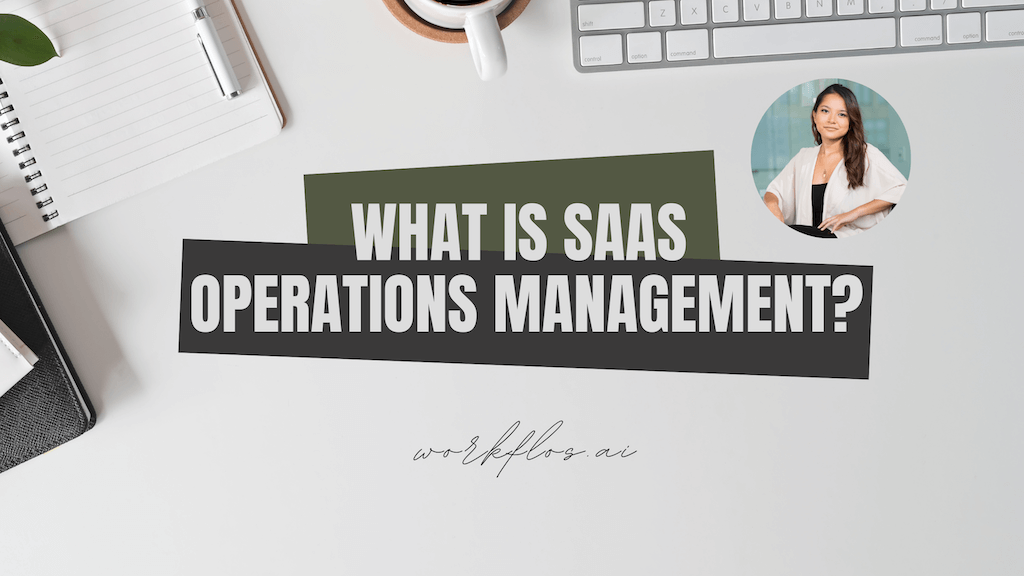
Introduction
SaaS Operations Management is the practice of managing your software as a service (SaaS) platform. This can include managing the infrastructure that supports your platform, the software itself and the processes that developers follow to keep everything running smoothly and efficiently.
In this post, we will cover what SaaS Operations Management is and why it’s important for organizations today. We’ll also discuss how you can implement SaaS Operations Management in your organization so that it becomes an integral part of how you do business.
SaaS Operations Management is the practice of managing your software as a service (SaaS) platform.
SaaS Operations Management is the practice of managing your software as a service (SaaS) platform. It involves managing the infrastructure that supports your platform, the software, and the processes that developers follow to keep everything running smoothly and efficiently.
A good SaaS Ops Manager will be able to:
- Identify risks and opportunities for improvement in their organization’s operations.
- Drive continuous improvement by aligning business goals with technology investments across different departments such as development or marketing teams who may not have much experience with each other’s workflows yet still need access to shared resources like databases or cloud storage services like Amazon Web Services (AWS).
This can include managing the infrastructure that supports your platform, the software, and the processes that developers follow to keep everything running smoothly and efficiently.
SaaS Operations Management is the practice of managing the infrastructure that supports your platform, the software, and the processes that developers follow to keep everything running smoothly and efficiently.
This can include managing the infrastructure that supports your platform, the software, and the processes that developers follow to keep everything running smoothly and efficiently.
Infrastructure can be complex: it includes databases storing customer data; servers hosting applications; networks connecting those servers together; firewalls protecting against cyberattacks; backups for both data loss prevention (DLP) purposes as well as disaster recovery (DR).
This post is designed to help you understand what SaaS operations management is, how it works and how you can implement it in your organization.
In this post, we’ll explore what SaaS operations management is and how it works. You’ll also learn about the different types of tools that can help you implement your own SaaS operations management system.
SaaS Operations Management Definition:
In short, SaaS Operations Management is a type of software that helps businesses run their business processes more efficiently by automating tasks like monitoring server uptime or tracking customer support tickets.
Why do we need SaaS Operations Management?
As software development becomes more complex and sophisticated, the need for a comprehensive approach to managing applications has become evident. Software as a Service (SaaS) platforms are becoming increasingly popular due to their ability to deliver scalable applications with minimal maintenance costs. However, because these services are delivered over the Internet or through mobile devices, they require constant monitoring by IT teams in order to ensure that they’re working properly at all times.
The goal of SaaS Operations Management is not only to improve efficiency but also effectiveness–the latter being defined as how well someone performs his/her job within their organization
What are the benefits of SaaS Operations Management?
SaaS Operations Management will help you to improve your customer experience, reduce costs and increase productivity. The benefits are as follows:
- Improved customer experience – By using SaaS Operations Management tools you can proactively monitor the health of your software environment by detecting issues before they affect end users. This means that if there is an issue with their service, it will be fixed quickly so that they don’t have any downtime or loss of productivity. This also means that customers won’t be able to complain about poor performance or slow response times because these issues were already identified before they occurred!
- Reduced costs – By using SaaS Operations Management tools, businesses are able to save money by reducing downtime caused by problems such as hardware failures or human error (for example when someone accidentally deletes files). These savings come from both reduced labour costs associated with fixing these problems manually (such as hiring someone who knows how computers work) as well as avoiding unnecessary expenses related specifically towards fixing hardware issues like buying new servers every few years just because old ones break down too often.”
What are the challenges with implementing SaaS Operations Management?
The challenges with implementing SaaS Operations Management are as follows:
- Staffing – You will need to hire a team of specialists in order to effectively manage your SaaS operations. The right people will have experience in this field and know how to handle the day-to-day tasks associated with running an enterprise cloud platform. They should also be able to work well together as part of an integrated team, so that they can collaborate on solving problems or resolving issues that arise during the course of their work.
- Cost – While there are no upfront costs for hiring staff for this role, there may be some recurring expenses such as salary payments every month (or at least every quarter). You should also consider any additional costs associated with training new hires who come onboard at some point down the road
Workflos SaaS Operations Management has become increasingly important in recent years because of its many benefits
Workflos can Find, Deploy, Manage, Build and Sell your enterprise apps.Trusted by thousands of small and mid-sized companies, startups worldwide.
These include:
- Find the best SaaS products for your business
- Choose the right SaaS for your business from 20,000+ products, based on all popular marketplaces’ reviews, just in one place.
- Deploy your SaaS in minutes
- Seamless deployment with integrated Single Sign-On, Identity Provisioning, and a plethora of workflow templates, out-of-box.
- Manage internal and external apps on one platfrom
- Build your internal apps with IDaaS, get your external apps from the AppStore, Manage all of them on Workflos, and unlimited!
- Build your apps enterprise ready
- Provide Full-Stack of authentication, authorization, directory and audit logging capabilities for you to build enterprise ready applications.
- Sell your apps in a smarter way
- Help you get customers with precise targeting at a lower cost.
Conclusion
SaaS Operations Management is a practice that’s becoming more and more important as the world transitions from traditional software to cloud-based solutions. It’s up to you to decide whether or not your organization needs this type of service, but if it does then we hope this article has given you some insight into how it works and why it’s useful!


